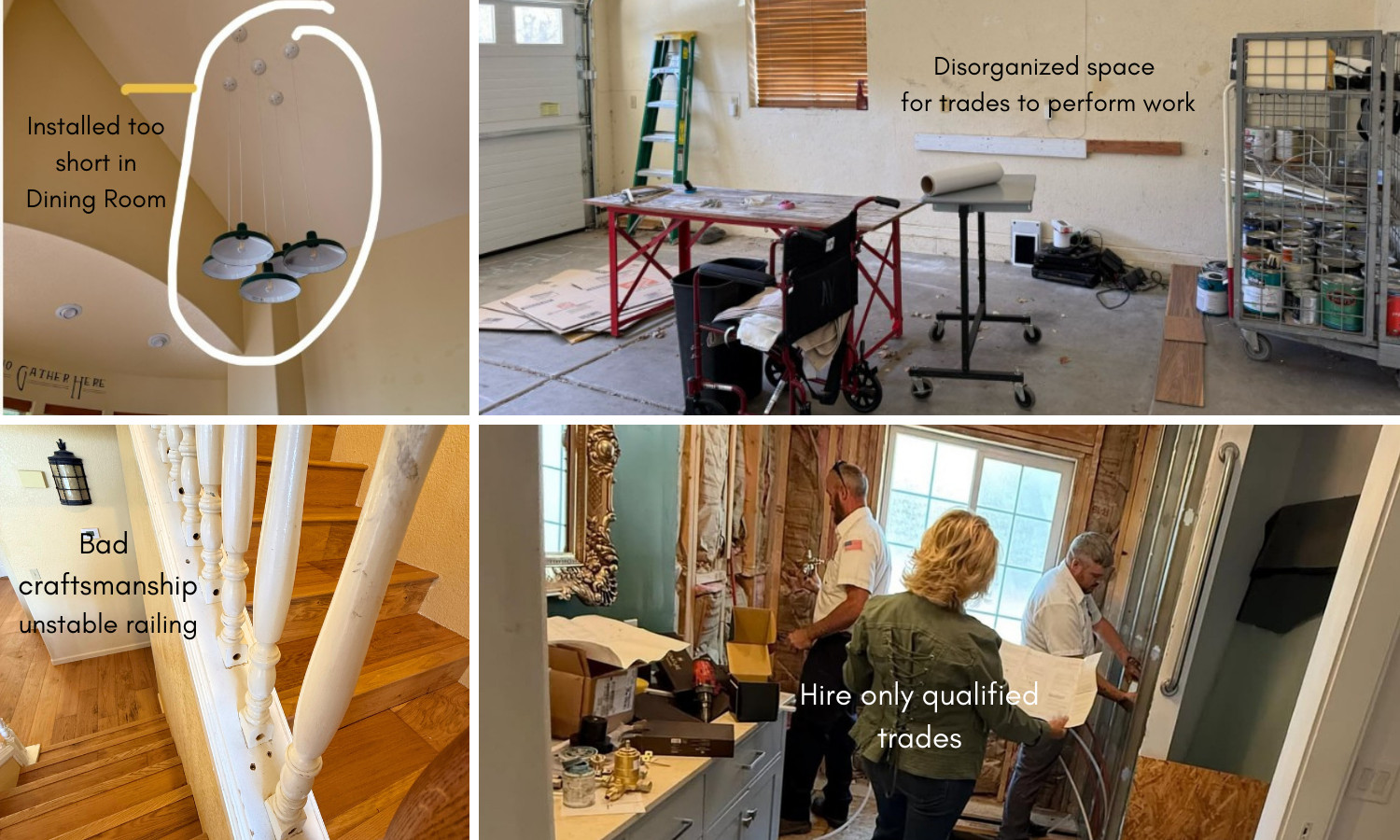The Hidden Costs of DIY Design

The Hidden Costs of DIY Design: When 'Saving Money' Actually Costs You More
Why expert oversight isn't an expense—it's the smartest investment you'll make
That Pinterest-perfect kitchen renovation looked so achievable. The tutorials made it seem simple. The budget seemed reasonable. But six months later, Sarah found herself staring at crooked subway tiles, a backsplash that didn't quite reach the ceiling, and a contractor's estimate to "fix everything" that was triple her original budget.
Sarah's story isn't unique. In fact, it's becoming the norm in an era where DIY culture promises that anyone can achieve professional results with enough YouTube videos and weekend determination.
The True Price Tag of "Saving Money"
When homeowners choose the DIY route to avoid design fees, they're often shocked to discover that their "cost-saving" approach has actually become their most expensive mistake. Here's what the numbers really tell us:
Material Waste: The 30% Rule
Professional designers know that material calculations aren't just about square footage. They account for cuts, mistakes, pattern matching, and future repairs. DIY projects typically waste 25-30% more materials than professionally managed ones.
Real Example: A 200-square-foot tile job requiring $2,000 in materials often ends up costing $2,600-2,800 in actual purchases, plus disposal fees for the excess.
The Rework Reality
Industry data shows that 68% of DIY projects require professional intervention to correct mistakes. The cost to fix incorrect work is typically 2-3 times more expensive than doing it right the first time.
Why? Undoing work, disposing of materials, and starting over creates a compound cost effect that rarely exists in professionally managed projects.
Timeline Creep and Its Hidden Expenses
That "weekend project" that stretches into months isn't just inconvenient—it's expensive:
- Temporary living arrangements: $150-300 per night for hotel stays during kitchen renovations
- Eating out costs: $80-120 daily for families who can't use their kitchen
- Storage fees: $100-200 monthly for displaced belongings
- Opportunity costs: Lost weekends, vacation days, and personal time
The Permit and Code Compliance Trap
Professional designers navigate permitting and building codes daily. DIYers often discover code violations during inspections, leading to:
- Permit delays: Additional fees ranging from $500-2,500
- Code compliance corrections: Often requiring complete rework
- Insurance complications: Claims denied due to unpermitted work
- Resale impact: Buyers avoiding homes with unpermitted modifications
When DIY Design Decisions Backfire
The Scale and Proportion Problem
Without trained eyes, even well-intentioned homeowners make costly proportion mistakes:
- Furniture that doesn't fit: Average return/exchange costs of $200-400 per piece + Restock Fees
- Lighting that's inadequate: Rewiring costs averaging $1,200-2,500
- Storage solutions that don't work: Custom corrections averaging $3,000-5,000
The Finish Selection Fiasco
Choosing materials without understanding their performance characteristics leads to premature replacement:
- Wrong paint finishes: Repainting costs within 2-3 years instead of 7-10
- Inappropriate flooring: Early replacement costs averaging $8,000-15,000
- Mismatched undertones: Color correction affecting multiple rooms
The Smart Luxury Approach: Expert Oversight as Investment Protection
Smart luxury isn't about spending more—it's about spending wisely. Professional design oversight provides:
Front-End Planning That Saves Back-End Costs
- Accurate material calculations reducing waste by 25-30%
- Proper sequencing preventing costly delays and rework
- Code compliance from day one
- Vendor relationships providing better pricing and reliability
Risk Mitigation Worth Its Weight in Gold
- Insurance protection through licensed professionals
- Warranty coverage on work and materials
- Quality control preventing expensive mistakes
- Timeline management avoiding costly delays
Long-Term Value Protection
Professional design oversight ensures your investment:
- Maintains its value through proper execution
- Ages gracefully with appropriate material selections
- Functions optimally with well-planned layouts
- Appeals to future buyers if you decide to sell
The Real ROI of Professional Design
Consider this comparison for a typical $50,000 renovation:
DIY Approach:
- Initial budget: $50,000
- Design consultation: $0
- Material waste (25%): $7,500
- Rework costs (average): $12,000
- Timeline delays/additional living costs: $4,500
- Total actual cost: $74,000
Professional Oversight Approach:
- Initial budget: $50,000
- Design consultation and oversight: $7,500
- Efficient material usage: $0 waste
- First-time correct execution: $0 rework
- On-time completion: $0 delay costs
- Total actual cost: $57,500
The professionally managed project saves $16,500 while delivering superior results and peace of mind.
Making the Smart Choice
The question isn't whether you can afford professional design oversight—it's whether you can afford not to have it. In today's complex building environment, with supply chain challenges, code updates, and increasingly sophisticated systems, expert guidance has shifted from luxury to necessity.
Smart luxury means recognizing that true economy comes from doing things right the first time, not from doing them cheaply and hoping for the best.
Ready to Calculate Your True Costs?
Before you commit to a DIY approach, get the real numbers. Use our True Cost Calculator to discover what your project will actually cost—including all the hidden expenses that DIY tutorials never mention.
Understanding these costs upfront allows you to make informed decisions about where to invest your time, energy, and money for the best possible outcome.
[Get Your True Cost Analysis →] email us here Preplanning Budget Form
Because the most expensive renovation is the one you have to do twice.
Ready to explore how expert oversight can protect your investment and deliver the results you actually want? Let's discuss your project and create a plan that makes financial sense from day one.
